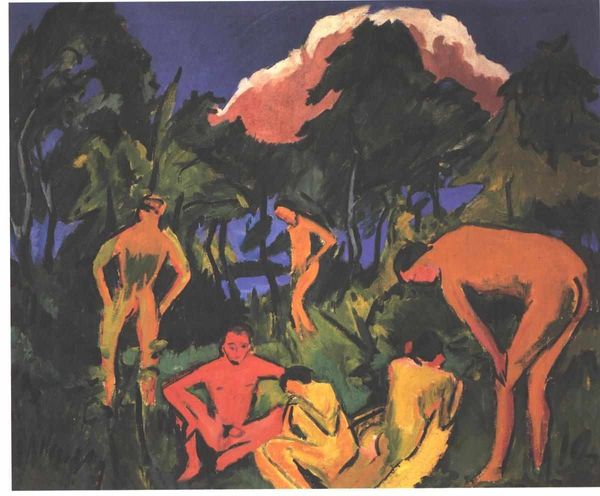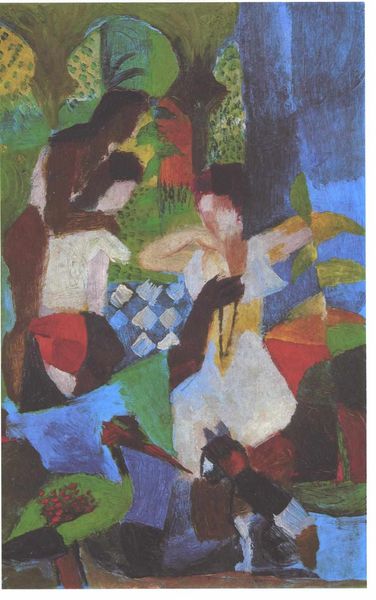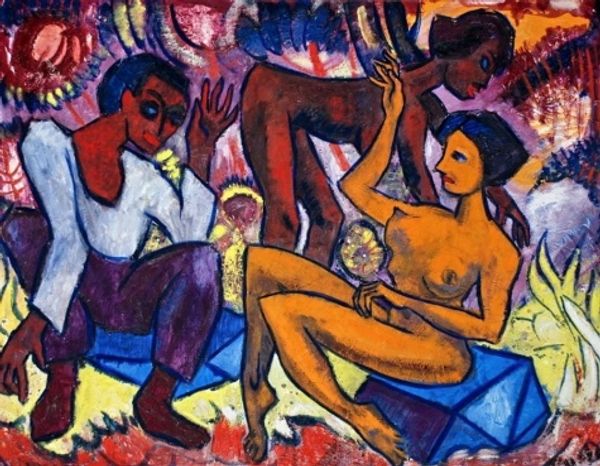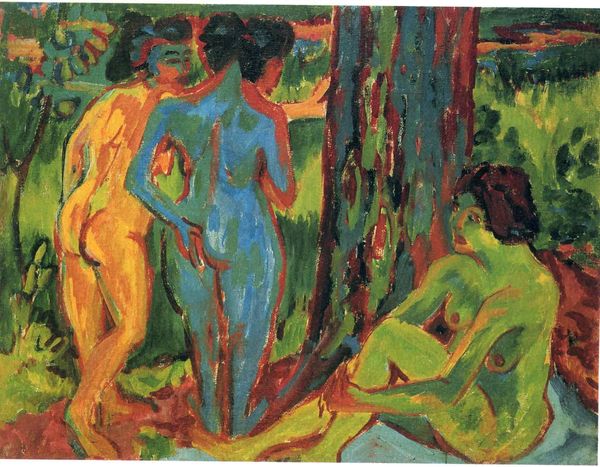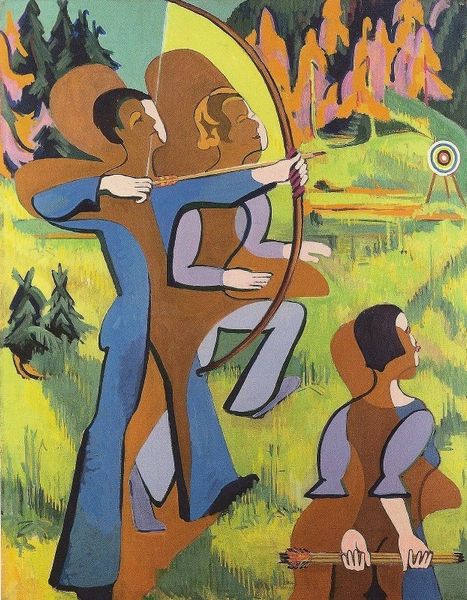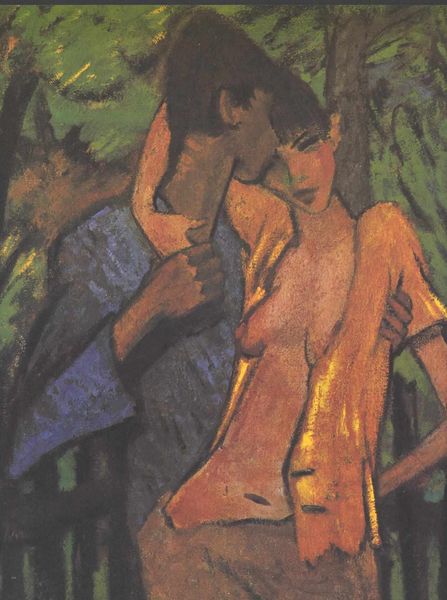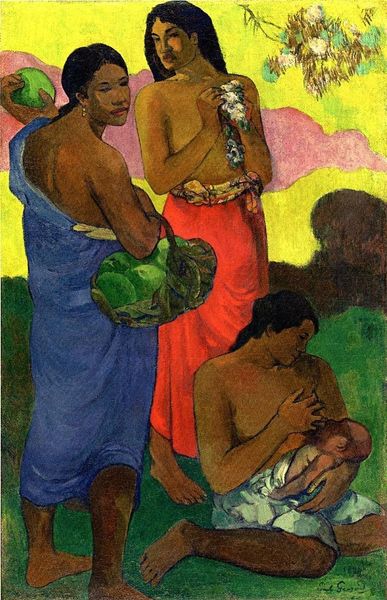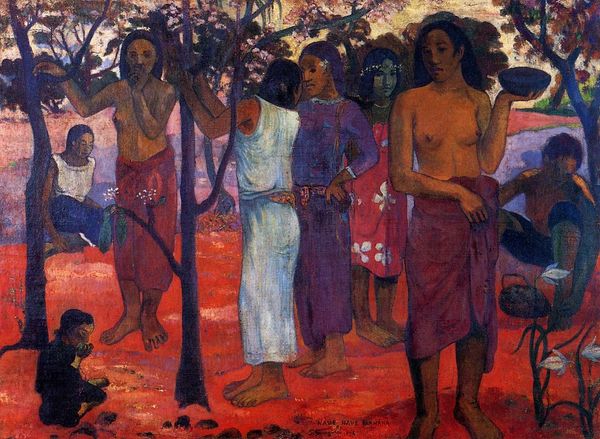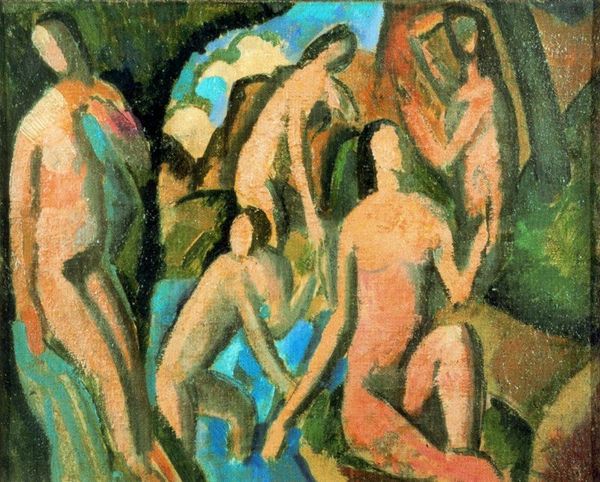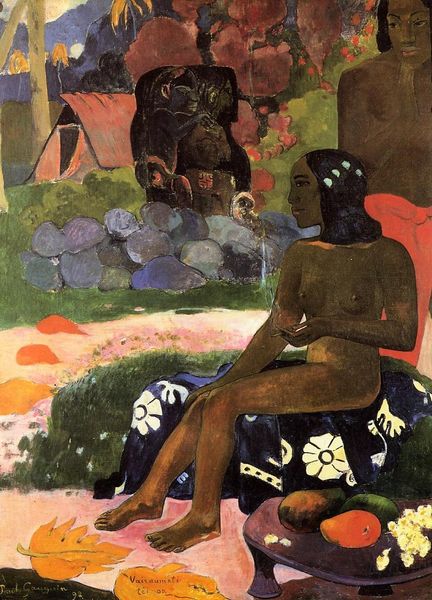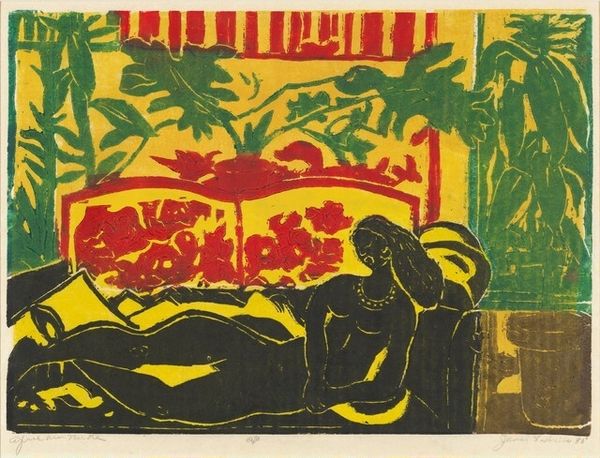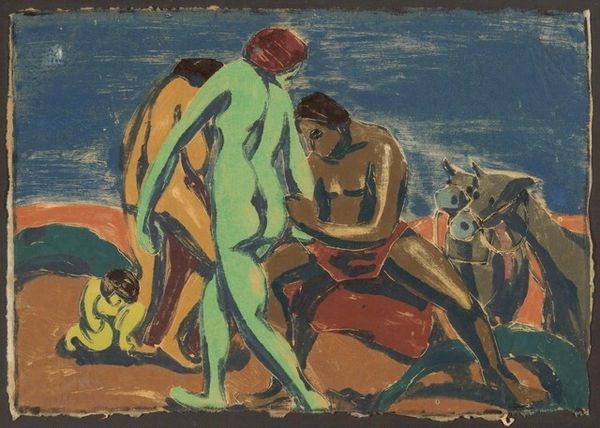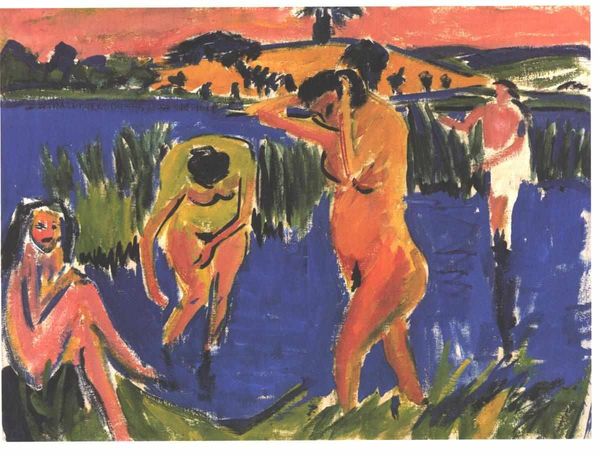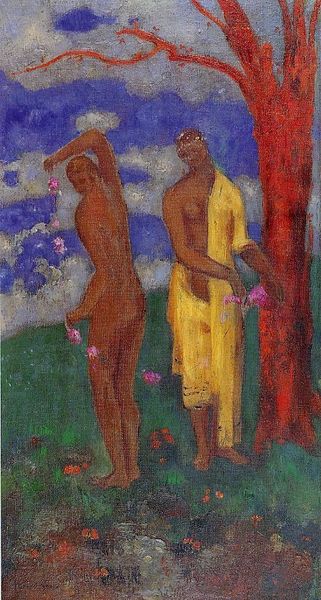
painting
#
narrative-art
#
painting
#
landscape
#
figuration
#
naive art
#
symbolism
#
post-impressionism
#
nude
Copyright: Public domain
Curator: This is Paul Gauguin's "The Messengers of Oro," created in 1893, using tempera paint. What strikes you about it? Editor: It has an immediacy. Despite being a figural scene in a landscape, it feels almost dreamlike, naive. The bright yellow background lends an ethereal quality. Curator: Indeed. The use of tempera gives it that slightly chalky texture, enhancing the flattened perspective characteristic of Gauguin's style from this period. The messengers are a striking focal point aren’t they? Editor: They are, especially with their bold colors and simplified forms. Oro, the Polynesian god, isn’t depicted directly. So, what are they carrying, culturally and historically? Curator: That's a good question! Gauguin was fascinated by Tahitian spirituality. These messengers, we could speculate, represent figures bringing divine will to the earthly realm. Gauguin blends his artistic license with interpretations of Tahitian culture. His subjective view informs a modern Western construction. Editor: Absolutely. It’s easy to romanticize and idealize non-Western cultures. How much did the colonial context inform the art? What can we tell about how the market impacted Gauguin's exotic vision? Curator: Those are critical considerations. There’s a powerful dialogue around representation and power inherent in colonial-era art. Looking at Gauguin’s messengers with those lenses offers ways to think about cultural exchange in the visual field. The text layered into the painting is evocative. What impact did that have? Editor: It frames the figures in language but leaves them open to further interpretation. They aren't frozen in one definitive colonial reading; the image is mutable and relational. Curator: I see it similarly. It leaves so much unsaid, yet somehow deeply suggestive. There's a powerful undercurrent in this tempera work that stays with you. Editor: It really invites a reflective response. Thank you.
Comments
No comments
Be the first to comment and join the conversation on the ultimate creative platform.
